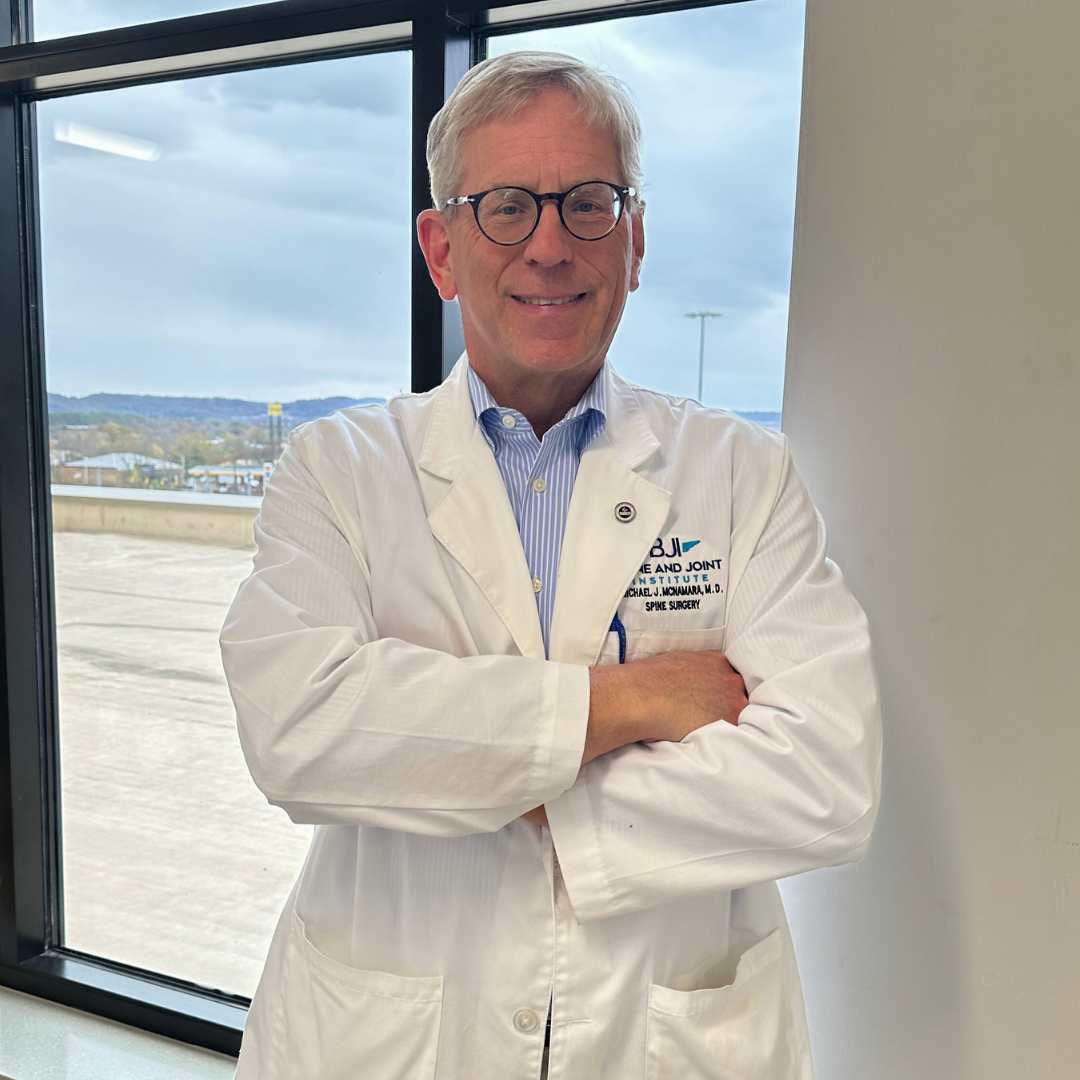
08 Dec Life can be a pain in the neck … literally
Originally published in the Williamson Herald –
Dr. Michael McNamara, offers advice on how to avoid and relieve chronic neck pain with a busy lifestyle.
No matter who you are, life can get busy. Between school and work, friends and home-life, it’s easier than ever to stay connected virtually. But that increase in mobile device usage could be adding physical pressure to your already busy lifestyle.
Dr. Michael McNamara, orthopaedic spinal surgeon at Bone and Joint Institute of Tennessee, has seen a significant increase in patients with neck pain and cervical spine issues over his nearly 30 years in the field.
“The biggest factor related to neck pain is the use of mobile devices and laptops,” said Dr. McNamara. “We tend to look down a lot, and some people look down all day.”
This can put strain on the neck and create musculoskeletal pain that can continue unless treated correctly.
However, on-the-go, tech-savvy adults are not the only ones at risk for increased cervical spine issues. Children can develop neck pain from carrying backpacks that are proportionally too heavy.
“We recommend weighing your child’s backpack and trying to get it under 20-25 pounds,” said Dr. McNamara. “But in today’s world, that can be very difficult.”
For smaller children, the weight of their backpacks should be even less. He also advises against looking down at a mobile device while carrying a backpack as combining those activities can increase pressure on the neck.
However, positive neck health for everyone starts with the basics.
“Good posture is absolutely imperative to positive neck health,” said Dr. McNamara. “The earlier we can maintain correct posture the better. It can be difficult to reverse later in life.”
Dr. McNamara also encourages people to maintain an active lifestyle and a healthy weight complete with regular exercising and stretching. He advises patients to avoid smoking as it can also be a contributing factor to cervical spine issues.
Sometimes, desk work or long school days can create unavoidable neck pain. In those cases, Dr. McNamara suggests stretching exercises like chin tucks that work to relieve pressure by realigning the head over the shoulders. Anti-inflammatories, icing and heating (with caution) can also be good home remedies to alleviate neck pain.
“If these methods do not work, we move on to other non-invasive treatments,” said Dr. McNamara. “This can range from physical therapy to chiropractic work or massage therapy, and, in some situations, even steroid injections.”
However, he adds that some people’s pain will progress to the point rupturing a disk or developing a bone spur which would require an operation to correct.
“When you have severe pain radiating into your arms or compression of the spine that affects the way you walk, that’s when surgery is the best option,” said Dr. McNamara.
Fortunately, Dr. McNamara and the team of providers at Bone and Joint Institute are extremely knowledgeable about a variety of surgical methods to relieve lingering neck pain.
“Depending on the patient and their needs, we can perform surgery through the front or back of the neck to remove disks, fuse disks together or replace them entirely,” said Dr. McNamara.
Replacement disks are more common in younger patients where a metal or plastic device serves the function of the disk. For older patients, fusions are more common.
Surgeons are also able to go into the back of the neck, if necessary, to take pressure off nerves by creating a space in the spine or performing a fusion with screws and rods.
Overall, patients are back to their daily lives relatively quickly after these types of procedures. Most fusion patients should limit their activity for six to eight weeks while younger patients who received artificial disks can recover in two to four weeks. Posterior decompression without fusion can take three to four weeks for recovery.
We know your lives are busy, but the providers at Bone and Joint Institute are available and ready to help the people of the community.
“Although most neck pain can be treated noninvasively, it’s always a good idea to get evaluated if you experience lasting issues,” said Dr. McNamara.
To learn more or schedule an appointment, visit: boneandjointtn.org.
